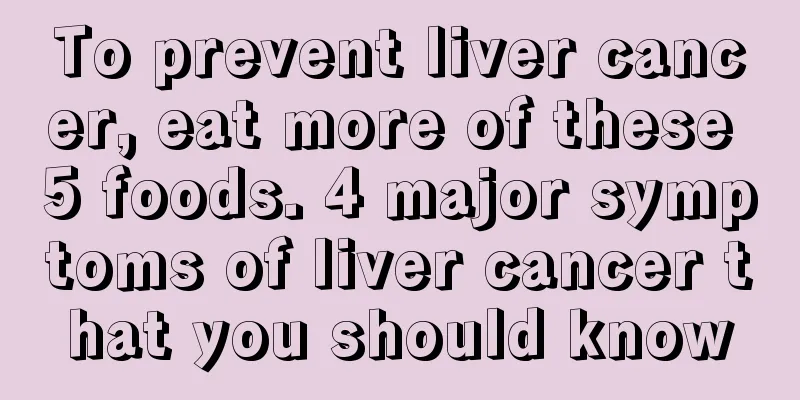Are test-tube babies more likely to suffer from cerebral palsy? What symptoms should you watch out for

|
Now the technology of in vitro fertilization is very mature, and the chance of in vitro fertilization is very high, which can make patients become pregnant successfully, and the chance of producing multiple births will be higher. However, because the rules of in vitro fertilization are different from those of normal pregnancy, the baby's body will be more fragile, and the chance of cerebral palsy and multiple diseases will be higher. After the birth of the test-tube baby, parents need to understand some knowledge about cerebral palsy and observe all aspects of the child's physical movements. Test-tube babies often suffer from cerebral palsy Cerebral palsy, also known as cerebral palsy, causes brain damage and the patient will experience symptoms such as loss of motor function, language and memory. Swedish researchers recently published a study showing that test-tube babies created through artificial insemination are three times more likely to be born with cerebral palsy than babies conceived naturally. Bo Strombelli, a medical staff member from a university children's hospital in Uppsala, Sweden, and his colleagues carefully observed 5,680 babies conceived through artificial insemination and compared them with 11,360 babies conceived through natural fertilization of similar age and family background. The results showed that the former were three times more likely to be born with cerebral palsy than the latter; in addition, the former were four times more likely to suffer from developmental delay than the latter. Therefore, researchers recommend that in the future, during artificial insemination, it is best to inject only one fertilized embryo into the mother at a time. This will not only reduce the chances of twins and multiple births, but also reduce the resulting premature births and low birth weight, thereby reducing the incidence of cerebral palsy in newborns. What are the symptoms of cerebral palsy in test-tube babies? (1) Stiffness, especially when dressing, the upper limbs are difficult to put into the cuffs; when changing diapers or washing, the thighs are difficult to extend; when wiping the palms and taking a bath, the limbs become stiff. Babies don't like baths. (2) Difficulties in early feeding, chewing, drinking, and swallowing, as well as drooling and breathing disorders. (3) Low sensory threshold, manifested as being easily startled by noise or changes in body position, and having an increased hugging reflex accompanied by crying. (4) Normal infants shortly after birth may step alternately with their feet when standing upright due to the stepping reflex. Although it may disappear once at 3 months of age, if the child still has no signs of standing or taking steps at 3 months of age, cerebral palsy should be suspected. (5) Babies over 100 days old are still unable to lift their heads, and their heads still sway when they straighten their backs at 4-5 months. (6) Fist clenching: Generally, infants can clench their fists but not open them within 3 months after birth. If the thumb is still adducted and the hand cannot be opened at 4 months, cerebral palsy should be suspected. (7) A normal baby should be able to reach out and grab objects when seeing them between 3 and 5 months old. If a baby still cannot do so after 5 months, it is suspected that the baby has cerebral palsy. We already know about the symptoms of cerebral palsy in infants and young children. We hope that understanding these related symptoms can help parents detect the disease in their children in time when they are sick, and take their children to receive scientific treatment and care in time to avoid missing the best time for treatment. |
>>: What are the methods for preventing and treating infectious diseases?
Recommend
What to eat for low blood pressure
When it comes to the disease of hypotension, I be...
Why vinegar needles are used to treat bone spurs
Bone spurs, also known as bone hyperplasia, are a...
What are the symptoms of liver cancer before death? There are 6 symptoms of liver cancer before death
If patients with advanced liver cancer develop sy...
Can six-month-old babies eat yam?
The gastrointestinal system of a 6-month-old baby...
What are the symptoms of bladder cancer recurrence
Bladder cancer is a very common tumor disease. Mo...
What are the dietary taboos for brain tumors
Dietary taboos for brain tumors are very importan...
Is patting the wrist effective in detoxification?
With the continuous improvement of living standar...
These phlegm-removing remedies are effective and simple
After coughing, everyone will find that there is ...
What causes colitis?
Colitis is a common disease in daily life. If it ...
What is medical stone
What is medical stone? Drinking tea is a leisure ...
Can drinking beer help you grow taller
For some patients with stomach problems, they wil...
What tastes good with mustard
Mustard can be paired with many foods in daily li...
Sweating and vomiting
In people's daily lives, many people experien...
Can malignant teratoma be cured
Malignant teratoma is different from other ovaria...
What is the reason for dry cough in autumn
The weather in autumn is too dry and the human bo...









